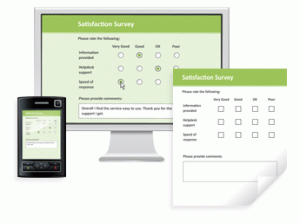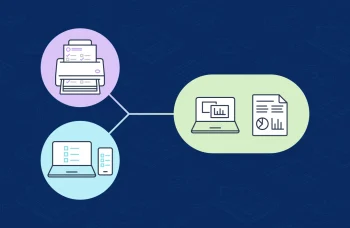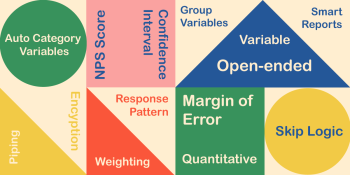Paper surveys vs. online surveys. What’s your opinion?
 Since the rise in popularity of online surveys, the questions still remains, are online surveys better than paper surveys?
Since the rise in popularity of online surveys, the questions still remains, are online surveys better than paper surveys?
Many businesses have shifted some, if not all of their surveys to online platforms, ready for completion on online or mobile devices. For some organizations, however, the decision to shift is a difficult one to make. Some target populations may not be receptive to online surveys, making the transition a difficult decision. Are online surveys superior to paper surveys in terms of both speed and cost-efficiency? The debate between which is more effective continues.
How does each mode of survey research fare in your market? Can your research remain valid if you switch to one mode of survey research, but leave the other behind? Take into consideration the following factors:
Speed
- Paper Surveys are notorious for taking a good amount of time to execute and manage. Whether administration is in-person, mailed, or sent as an email attachment, speed is always going to be a factor with paper surveys. Time for the surveys to be distributed, completed by respondents, and the time it takes to mail them back for processing is going to increase the time. Data entry will then be needed to enter data into your database or survey software system. Furthermore, keep in mind, multi-page or complex paper surveys may require scanning to collect and organize data. If time is not an issue, paper surveys may be a viable option for you.
- Online Surveys, however, can collect data in very little time. With many online survey software solutions, creating online surveys is simple and can be administered to your population via email or social media networks quickly. Because of this rapid distribution capability, your sample population can respond almost immediately, and data is collected automatically. More sophisticated survey software systems provide real-time analysis tools so you can track the progress of your online survey.
Flexibility
- Paper surveys do have their design limitations. The design capabilities of an online survey are more flexible. However, both survey modes can accommodate multiple choice questions, single-response questions, list questions, and grid questions. However, paper surveys are not able to handle drop-down boxes, interactive slider controls and star-rating controls, clickable maps and images, or multimedia files – the features that make the process more user-friendly and appealing to the respondent.
- Online survey software also has more advanced logic features that are not available in paper surveys. Logic features allow you to customize the experience to the respondents, including routing, randomization, code masking, piping answers into subsequent questions, and code exclusivity. Additionally, many online survey software providers offer triggered alerts – automated email alerts that can be easily inserted into the design of the survey that are used to be notify of issues being raised by a respondent, or to confirm receipt of a completed response.
Reach
- The needs of your population should be your main focus. The target population you want to reach may prefer just online surveys or just paper surveys, and sometimes, there may be a need for a mixed-mode for a diverse population – both paper and online surveys for the same survey research project. The appeal of saving money with online surveys is tempting, but if that survey is not reaching your desired target audience that prefers a paper survey, you are wasting your time and efforts.
- Non-tech savvy respondents may not have access to a computer and therefore not have access to the Internet to complete an online survey via email or on social media networks. For example, if you are conducting research on patients in assisted living facilities with a target population of seniors with little to no access to computers, paper surveys are necessary. Additionally, respondents in rural, remote locations may have online accessibility issues. Examine your target population carefully.
Many companies will benefit by transitioning from paper-based surveys to online surveys. However, paper-based surveys certainly still have their place in survey research and always will. Nevertheless, continued advances in technology may increasingly diminish that demand.
How about response rates? Which survey mode provides better response rates? Stay tuned for our upcoming blog post. The answer may surprise you.



